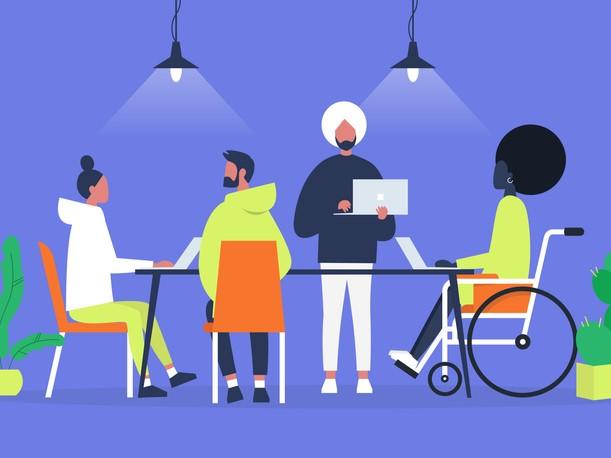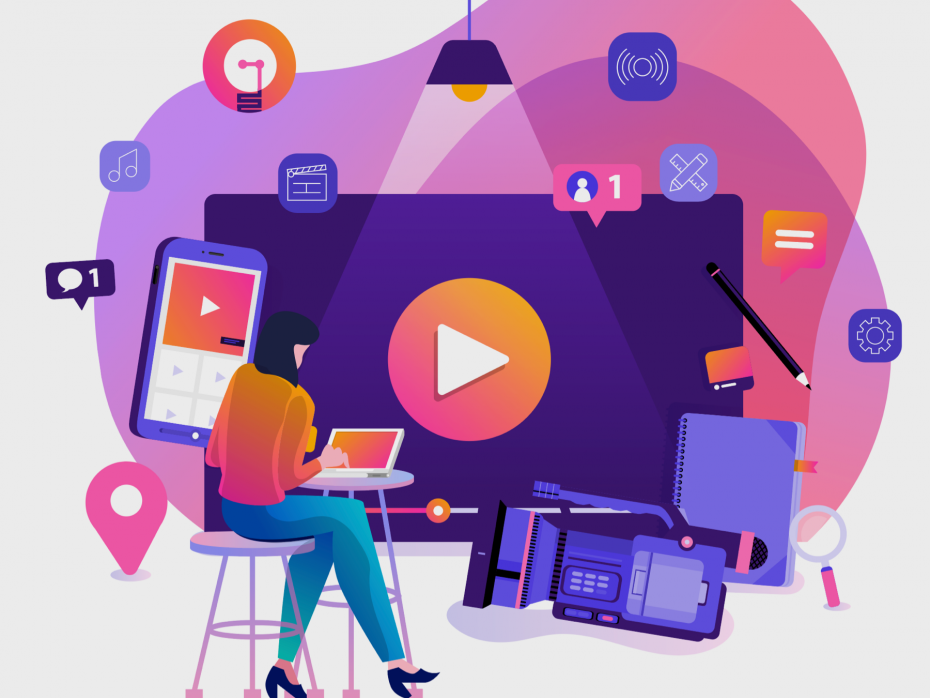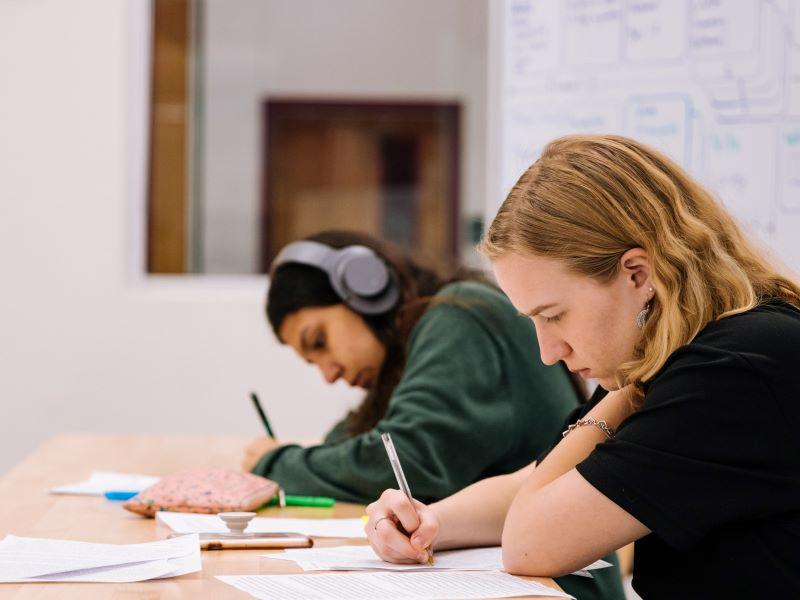Factoring “equity” into higher education often suggests the idea of helping students who require individual adjustments. This could be due to conditions such as physical differences, chronic illness, sensory impairments, learning differences or mental health challenges, and while we’re aware that a truly inclusive society would mean higher education institutions wouldn’t need disability support provisions, in practice, university departments serving these students contend with many challenges. For these teams, who are usually grappling with these myriad obstacles at the design phase, universal design for learning (UDL) principles can provide a framework for, as well as a catalyst towards, inclusionary practice.
What is UDL?
Based on the concept of universal design, UDL is a framework that supports access and participation for all learners. Ron Mace, an architect, coined the term “universal design” as a way of “designing all products and the built environment to be aesthetic and usable to the greatest extent possible by everyone, regardless of their age, ability or status in life”.
Similarly, UDL integrates broader structural changes within our processes and learning environments that are accessible for all, regardless of student needs or individual adjustments. UDL can lend itself quite well to diverse contexts, from disabled learners to culturally diverse and international students. Most strategies that enhance learning for one type of learner also benefit others – for example, complementing verbal lectures with visual aids or captioning helps students with hearing impairments as well as those who are unfamiliar with the lecturer’s accent or vocabulary.
- Do we need equity or equality to make things ‘fair’? Actually, we need both
- Returning to ‘normal’ is really a return to ignorance
- Disruptive innovation in the classroom: making higher education more accessible to a large population
Practical advice
One objective of UDL is to enable students to be more creative and develop resources and knowledge. Customisation is key here, and providing examples of high-quality work can be a beneficial form of support for all students. More importantly, give examples of the processes students can use for achieving those results. Ask students to report their answers and the process they undertook to arrive at those answers. Provide feedback on student strategy as well as the final product.
UDL also promotes different modes of expression, which can be incorporated through activities and teaching methods. Multisensory formats, which can be integrated into different types of courses, are good starting points. This includes lectures with visual material such as images, charts, graphs or videos. In addition, classes with interactive tools where students can give feedback anonymously can enhance student engagement. Also, small group or paired activities during the in-class discussion can feel a safer space for students to discuss their understanding than whole-class discussions, reducing anxiety.
Providing opportunities for all students to share important individual information without making it compulsory can be useful. It shows students that the university cares about their diverse backgrounds, which can contribute to student engagement. The customary model of disability support in higher education institutions can include individual learning support plans for disabled students. However, UDL would propose offering all students opportunities to share information, not just disabled students. For example, creating a self-serve option for students to share anything they would like their lecturers or staff to know about their educational background, name, gender pronouns, learning needs, disability and learning goals.
The challenges
In promoting and supporting UDL, there are countless challenges, especially as many equity and inclusion services tend to be viewed insularly and can, unfortunately, find themselves distanced from key aspects of teaching and learning.
Ironically, the Equality Act (2010) can also present problems for these teams. The act, the central driver for inclusive practice in the UK, mandates that universities should not discriminate against disabled students and requires universities to advance equal opportunity. However, traditional models for supporting disabled students in universities can be unintentionally ableist by separating disabled students from their peers physically and emotionally under the supposed service of supporting their needs.
Furthermore, most higher education institutions place the responsibility on the disabled person to self-identify and request reasonable academic adjustments. However, many students choose not to identify as disabled and therefore go without reasonable individual adjustments that might have helped them navigate their academic experience more smoothly.
In addition, student populations have many intersecting barriers to traditional learning. For example, at Arden University, where I work, more than 80 per cent of our learners are mature students with many competing responsibilities. Other figures suggest that the make-up is 55.9 per cent BAME and 41 per cent white, with students predominantly coming from deprived areas.
So how can institutions tackle these challenges?
Integrate UDL principles into curricula
When principles from the UDL framework – engagement (supporting students’ purpose and motivation to learn), representation (displaying information in a flexible format) and expression (allowing students to express their knowledge in meaningful ways to their own goals) – are integrated into the design phase of course development, the curriculum or process is automatically shaped, from the outset, to meet the needs of the highest possible number of learners.
When these strategies and principles are put in place correctly, it ensures that the curriculum (course goals, materials and instructional methods) is intentionally and systematically planned and designed to address individual learning differences. The core principle of UDL, of providing utility to the greatest extent, also means that practitioners should always be looking to provide information in as broad a range of ways as possible. For example, learning materials and lessons should incorporate not only text, but also graphics, audio and video resources (with captioning).
Make use of non-traditional forms of assessment
Beyond the teaching process, institutions can also implement UDL through assessment practices. Rather than rely on the crutch of traditional assessments such as essays and exams, alternatives including oral presentations, photo essays and web publications can provide different and often more inclusive means of engagement for students, as well as multiple ways for them to show their comprehension – all without removing meaningful end points to modules or compromising a critical judgement of a student’s ability.
Move towards a self-serve focus for students
As mentioned earlier, one problem for inclusion services teams can stem from individuals’ opting out of self-identification. However, one way around this is setting up services to offer support for “disabling experiences” instead of “disabilities or impairments”.
For example, UDL principles might guide institutions towards implementing help for students framed in ways such as: how to maintain concentration when you are feeling anxious; motivation when feeling unable to move forward; or how to study with pain, both physical and emotional. Instead of focusing on identifying individual students who require individual adjustments, helping these students develop self-advocacy, self-awareness, self-determination, self-esteem and executive functioning is equally important.
Getting started
One thing institutions looking to implement UDL principles might look towards is developing a UDL working group. At Arden, we’ve found this to be a successful way to develop a framework of UDL across the institution. As a result, when designing or reviewing processes as a team, we are starting to consider the following:
1. What privileges do able-bodied students/staff have in the university?
2. What do they not have to be aware of?
3. What do they not have to think about in terms of people’s attitudes, physical structures and social norms within an HEI learning environment?
We are only just beginning our journey towards implementing UDL within our structures, but the process is genuinely worthwhile and has allowed us to work across the university with many different teams sharing the goal of designing for everyone.
Jacqui Whittle is inclusion adviser and Caroline Pike is inclusion services manager at Arden University, UK.




comment1
(No subject)